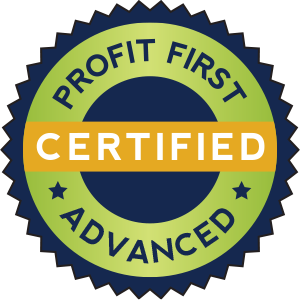What's Happening & Why
From April 2017 the rules governing the Flat Rate Scheme for VAT are changing.
The Flat Rate Scheme was introduced to simplify the VAT system for small businesses. However, the Treasury is now of the opinion that some businesses are choosing this scheme purely for financial reasons.
It's true that businesses that qualified for the scheme with relatively low costs may well have had a slight advantage. I personally don't believe this was a bad thing as it tended to benefit small businesses as they grew.
Whether changing the rules helps the Treasury increase it's revenue by removing this "advantage" or pushes many small businesses to opt out of the VAT system entirely remains to be seen.
What is the Flat Rate Scheme
The Flat Rate Scheme is a way to simplify VAT. You charge 20% VAT on your sales, then pay a percentage of this back to HMRC. This percentage is calculated on an average for the type of business.
You can also claim the VAT paid on assets over £2K.
What is the Change
If your costs are lower than the average used for your type of business, you would be better off financially being on the Flat Rate Scheme, rather than the Standard Scheme.
The change is to increase the rate used by "Limited Cost Businesses" to 16.5%. This is higher than all the other industry averages.
What is a "Limited Cost Business"
A Limited Cost Trader is a business where the amount spent on relevant goods (inc VAT) during a VAT period is:
less than 2% of your VAT flat rate turnover
greater than 2% of your VAT flat rate turnover but less than £1000 per year
"Relevant Goods" are defined as "goods" not "services" where the exclusive ownership is moved to your business. Here's a link to the full definition.
This last part is the one that will really hurt some businesses. For the purposes of deciding whether a business is caught by the higher rate - Service Costs are ignored!
Where Things get Tricky
This comes into force from 1st April 2017. So, if your VAT period starts before and ends after the this, you'll have to use different rates.
From the guidance, a business is defined as a Limited Cost Business based on the costs over the relevant VAT period. This could mean that a business could move in and out of this definition from VAT period to VAT period. There may well be some more information released about this, but calculating this every VAT submission could defeat the purpose of using the Flat Rate Scheme to simplify VAT.
Tale of two percentages Net vs Gross
On the face of it, 16.5% might not sound that bad - after all, you can add 20% to your sales. However, this is an aspect of the Flat Rate scheme that catches out quite a few people.
You add 20% to your NET sales then pay 16.5% of you GROSS sales to HMRC. We can see below that this doesn't really leave much to cover the VAT you pay on purchases.
Sales Price (Net) £100.00
VAT added £20.00
Gross Sales Price £120.00
Due to HMRC £19.80
Considerations to make
These changes are likely to have an impact on the margins that you make.
When people decide to voluntarily register to VAT a major consideration is the effect it would have on their customers. While a VAT-registered customer would not really care, a non-VAT customer has to effectively pay 20% more for the service.
This needs to be taken into account when setting your pricing. Maybe now is a good time to review these decisions?
What are your Options
If you are caught by the new changes there are a few options available. Ultimately the choice will be a balance of convenience, cost and impact on your customers.
As the limited cost business definition only includes goods not services purchased, it makes it impossible to offer a general rule of thumb.
Even if you aren't caught by the changes it may well be worth checking if your current arrangements suit you best.
1) Deregister for VAT
Depending on your turnover, you may be able to deregister from the VAT system.
This would reduce the cost to your non-VAT customers
Remove the need to complete VAT returns.
You would not be able claim for the VAT on purchases. Though likely to be quite low if caught by the new regulations.
If you are likely to go over the VAT threshold anytime soon, this is probably not worth the hassle.
2) Stay on the Flat Rate Scheme
If your customers are VAT-registered and you're looking for an easy life. You may well decide to stick with the FRS and just deal with the increased rate.
Please bear in mind that this will reduce your margins and might even mean you need to increase your prices.
3) Move to the Standard Rate Scheme
This is likely to be the most beneficial financially.
It does require more effort than the flat rate scheme. However, with all the accountancy software available this needn't be too onerous.
The decision on what to do will be a personal one with several factors to consider. It's worth crunching a few numbers and looking ahead at what you expect to happen with your business over the coming years. As ever the devil is in the detail and you might need to talk it through with an accountant before making your decision.




